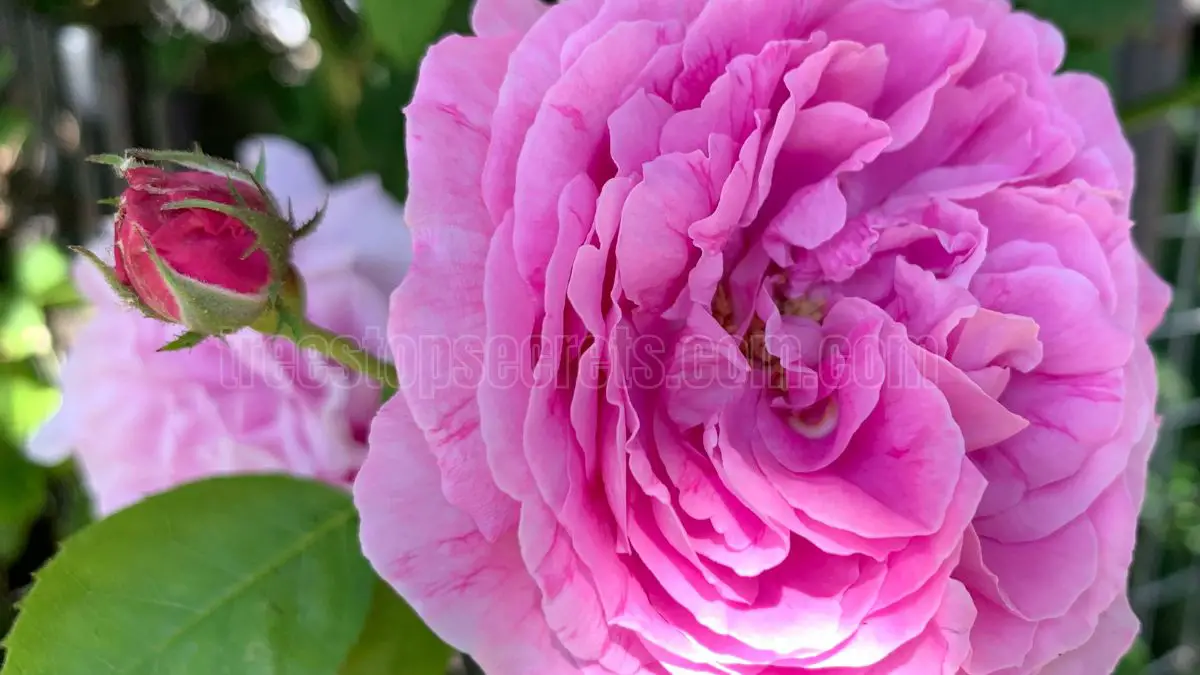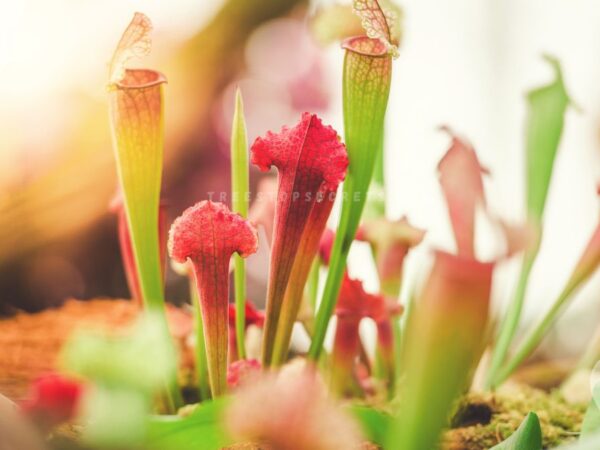Indoor roses require extra care, including the right amount of light, water and temperature. These well-loved houseplants love bright, indirect sun and temperatures between 65°F and 75°F.
Water your flowers with care and they’ll flourish. Avoiding root rot is crucial; allow the soil to dry out between waterings. Fertilizing every four to six weeks during the growing season will help them flourish.
Regular and careful pruning is key for promoting new blooms. It’s also necessary to remove any dead or blackened leaves. With a little patience and care, you can take these simple steps to ensure that your indoor roses will brighten your home all year round.
Key Takeaways
- Learn how the UK climate and weather can impact your indoor rose care. Modify your care schedules with the change of seasons, and be aware of daily humidity and temperature changes.
- Pick rose types that thrive indoors. Miniature and hybrid tea roses are particularly good choices for this purpose, as they tend to be hardy and offer beautiful flowers.
- Provide your indoor roses with good lighting conditions. Provide consistent temperature, humidity and drainage conditions for their best growth.
- Determine a regular watering routine that’s based on the moisture of the soil. You may want to try bottom watering methods to promote a deep root system.
- Select a potting mix with good drainage. Monitor your roses’ nutrient needs and supplement with organic fertilizers to promote glossy foliage, continuous blooms, and vigorous growth.
- Prune your indoor roses frequently and check for pests and diseases. Incorporate natural pest control practices to help your plants stay strong and vigorous.
Understanding Indoor Roses in the UK
Providing proper care for indoor rose plants in the UK, whether you’re a beginner or experienced gardener, requires a solid understanding. The variable climate that is so important to their growing process makes these miniature roses rather finicky plants, demanding focus on temperature and light levels.
1. How does the UK climate affect indoor rose care?
The changing seasons will affect how you care for your indoor rose. In winter, indoor roses will need additional heating. Indoor roses thrive in moderate climates, so it is important to maintain their preferred temperature range of 10°C to 25°C (50°F to 77°F).
Indoor roses don’t like sudden changes in humidity and temperature, so keeping an eye on local weather is important. During periods with extreme weather, modifications in care practices will be essential to shield the roses from sudden temperature shifts.
2. Which rose varieties thrive indoors in the UK?
Which rose varieties are best for growing indoors in the UK? Miniature and hybrid tea roses like ‘Baby Masquerade’ and ‘Chrysler Imperial’ are good options.
These species are sturdy and highly appropriate for indoor environments, providing stunning flowers and various adaptability to indoor conditions.
3. What are the essential needs for indoor roses?
For indoor roses, a good supply of light is important. Make sure to water them thoroughly, making sure the top third of the soil dries out between each watering.
Perfect humidity and temperature conditions are key to ensuring your indoor roses thrive. Monitor your plants closely for any indication of stress.
Aphids, spider mites, and mealybugs can all be dangerous to indoor plants, so be on the lookout for these nasty pests! I’ve found they bloom for a good 10 weeks. Each individual flower has a lifespan of up to four weeks with a winter dormancy period, encouraging repeat blooms in the process.
Optimal Growing Conditions
Developing optimal growing conditions for indoor rose plants is key to maintaining the health and beauty of roses indoors. Lighting, temperature, and humidity are crucial factors that affect the growth of potted roses.
1. What lighting conditions are best for indoor roses?
Indoor roses need at least two hours of direct sunlight each day, ideally in the morning. A north facing window would be best for the plants that are more susceptible to under-watering.
In spaces with limited natural light, you may need to use supplemental grow lights to provide your roses with all the light they need. Make it a point to regularly rotate these plants promoting even light exposure, helping to avoid leggy growth, creating a more balanced plant canopy.
2. What temperature range is ideal for indoor roses?
During the summer, make sure to keep the temp around 21°C (70°F) to promote healthy vigorous growth. In winter, lower it to 15°C (59°F) to support dormancy.
Extreme temperatures over 25°C (77°F) will likely damage the plant through dehydration or stress. Don’t put them next to radiators or in drafty places, as this will prevent temperature fluctuations and keep overall conditions more stable.
3. How does humidity impact indoor rose health?
Humidity is important in preventing indoor diseases like powdery mildew. If you want to boost humidity, try misting the leaves or placing humidity trays—trays filled with water and pebbles—around your roses.
Crispy leaves are often a sign of low humidity, so it’s important to keep the air around your indoor rose moist. Roses do best with consistently moist soil, with the uppermost third drying out between watering.
Watering Practices for Indoor Roses
Watering techniques are extremely important for the health of indoor rose plants. Correct moisture levels promote healthy growth of potted roses indoors, but poor watering practices can lead to issues like root rot. Knowing how to gauge soil moisture is key; for optimal growth, let the top third of the soil dry out between waterings.
1. How to adjust watering based on UK humidity?
Other signs that can tell you when to water your indoor rose are drooping leaves, dry soil, and yellow leaves. Update watering schedule during hotter, drier periods by feeling the soil with your fingertips. When humidity is high, you may not have to water as often.
Indoor heating tends to dry out soil rapidly, so be sure to keep an eye on moisture levels. Using a moisture meter will give you accurate readings, so you’ll know exactly how much water to give your indoor roses.
2. What are the best techniques for watering indoor roses?
Bottom watering is extremely efficient since it promotes deep root structure. This is an effective technique since it lets the plant drink only when it wants to, encouraging a healthier root system.
Make sure you’re using water that’s room temperature so as not to shock the roots. Make sure the pots have enough drainage holes to avoid water settling at the bottom, which can rot the roots.
Watering cans with narrow spouts encourage accuracy. This method ensures that you don’t accidentally spray the tops or crown of your rose, which could lead to rot.
Soil and Container Selection
Selecting the proper soil and container is critical for growing roses indoors, ensuring your indoor rose plant remains healthy and vibrant. The ideal soil mix will provide nutrients and drainage, while the right container will support adequate root growth.
1. What type of soil is best for indoor roses?
A mixture that allows for good drainage is important because you don’t want indoor roses to develop root rot. Here are key components to look for:
- Organic matter: Such as compost or well-rotted manure.
- Peat moss: For moisture retention.
- Perlite or vermiculite: To enhance aeration.
Creating these conditions allows for excellent drainage while still providing indoor roses with the moisture they require without drowning them.
Keeping pH between 6.0 and 6.8 will allow nutrients to be absorbed more efficiently, encouraging healthier plants.
2. How to choose the right containers for indoor roses?
The proper selection of containers goes a long way in ensuring your roses grow healthy and strong. For the depth, find pots with at least 12 inches in diameter to give your roots space to grow.
- Drainage holes: Essential to prevent water accumulation at the bottom of the pot.
- Material: Consider breathable materials like terracotta, which helps regulate moisture and temperature.
An annual or biennial repot is suggested, allowing space for developing roots and providing fresh soil too. This practice is the key to helping your roses adapt and thrive in a change environment.
Nutritional Needs and Feeding
Delivering the best nutrition possible It’s important to deliver the right nutrients to ensure indoor roses stay healthy. Plant nutrients are the key to producing strong growth, colorful flowers and overall plant health. Nutrient building blocks supply elements such as nitrogen, phosphorus, and potassium promote foliar growth, root vigor, and blooming.
With a robust and consistent nutrient availability, it’s easy for indoor roses to thrive in even the smallest environments.
1. What organic fertilizers work best for indoor roses?
- Compost: Rich in organic matter, it enhances soil structure and provides a slow release of nutrients.
- Fish emulsion: A liquid fertilizer that supplies nitrogen and trace minerals, promoting growth.
- Bone meal: High in phosphorus, it encourages root development and flowering.
- Kelp meal: Provides potassium and promotes overall plant health.
Slow-release fertilizers are especially helpful, since they release nutrients over an extended period of time, minimizing the chance of nutrient burn. Be sure to read the application instructions thoroughly to ensure you’re not over-fertilizing your rose, which can be detrimental.
Compost as an organic fertilizer is the best natural nutrient source. Composting enriches soil fertility and is good for the environment.
2. How often should you feed indoor roses?
Setting a feeding schedule with the growth cycle of indoor roses in mind will go a long way. Fertilizing every 4-6 weeks while growing helps promote the growth of a vibrant plant.
You’ll want to cut back on fertilizer when your rose is dormant in winter. Fine-tuning the frequency according to the size and vitality of the plant keeps them at their best.
Preventing over-fertilization is crucial. Regularly check for signs of over-fertilization like leaf burn or stunted growth and adjust fertilization habits accordingly to keep plants healthy.
Pruning and Maintenance Techniques
Indoor rose plants require regular pruning to maintain their health and vigor, which is essential for growing roses indoors. This practice promotes new growth, helps keep size manageable, and controls disease by improving air flow, directly influencing the beautiful blooms of your rose variety.
1. When and how to prune indoor roses effectively?
- Choose the right time: Late winter or early spring, just before the new growth starts, is best.
- Gather clean tools: Always use sharp, sanitized pruners to avoid spreading disease.
- Remove dead or diseased wood: Remove any blackened or shriveled stems, cutting them back to healthy tissue.
- Cut back stems: Try to cut stems back by at least one-third to promote a bushier shape.
- Minimize stress: To properly prune your indoor rose, use clean cuts at a 45-degree angle to prevent plant damage.
This promotes vigorous growth and improved air circulation, essential for growing roses indoors.
2. What are the best practices for leaf care and trimming?
Inspecting the leaves for pests and diseases can help. Performing a thorough and regular inspection will allow you to identify problems before they become serious.
Cleaning leaves with a soft damp cloth improves photosynthesis, helping your plant to flourish. Removing yellowed or damaged leaves helps the plant look its best and helps the plant direct energy to healthier growth.
For this reason, always use sharp scissors to ensure clean cuts, reducing damage to the plant.
Managing Pests and Diseases
Caring for indoor rose plants in the UK involves vigilance against pests and diseases that can threaten their health and beauty. By recognizing these threats and being proactive, rose enthusiasts can ensure their beautiful blooms are healthy for years to come.
1. What common pests affect indoor roses in the UK?
Common pests include:
- Aphids
- Spider mites
- Whiteflies
- Mealybugs
- Thrips
Symptoms of an infestation usually appear as yellowing leaves, webbing, or a sticky substance (honeydew) on the leaves. Frequent inspections can help you catch these common pests as soon as you notice signs of infestation and act quickly.
To prevent pests, maintain cleanliness of plants by regularly wiping leaves and providing adequate air flow. Planting pest-repelling companion plants is another solid pest prevention technique.
2. How to manage pests naturally without chemicals?
Insecticidal soap is the safest and most effective way to control pests naturally and effectively. This soap kills insects on contact by suffocation, and it is safe to use on plants.
Releasing beneficial insects, such as ladybugs, is an organic method to help keep these populations under control. Homemade remedies, like a solution of water and dish soap, can be just as helpful in keeping aphids at bay.
Finally, keeping plants healthy with appropriate watering and fertilizing reduces the chances for pests to attack. These steps, along with consistent monitoring and a tidy environment, go a long way towards keeping indoor roses happy and healthy!
As long as you give them the right amount of attention, you can enjoy the beauty of indoor roses.
Seasonal Care and Repotting
Caring for indoor roses, especially miniature roses, means being conscious of seasonal change, as it significantly impacts the health of your rose plants. Knowing when to repot and how to acclimatize these beautiful blooms to the outdoors will ensure they are healthy and thriving throughout the flowering season.
1. When is the best time to repot indoor roses?
Several indicators may suggest it's time to repot your indoor roses:
- Roots growing out of the drainage holes
- Stunted growth despite proper care
- Soil that dries out too quickly
Spring is ideal for this process, and because roses are in their growing season, new roots will take hold in the new soil quickly, encouraging healthy growth. Before repotting, look for root-bound signs. These happen when roots grow in a circular pattern around the pot.
Starting off with new soil is extremely important, as it can provide all the nutrients that old soil that has been depleted can no longer give.
2. How to transition indoor roses outdoors safely?
To acclimate indoor roses to outdoor conditions, follow these steps:
-
Start out by putting them outside in a sheltered spot for several hours each day.
-
Over the course of one to two weeks, slowly increase their outdoor exposure.
This gradual exposure will allow your roses to acclimate without going into shock. Keep a close eye on the local weather, for a surprise frost will instantly kill any new growth.
Continued care as your rose makes this transition is important. Watch soil moisture closely and protect from pests as necessary.
Conclusion
In short, growing beautiful indoor roses in the UK takes some patience and a touch of expertise. It’s that simple — begin with the right pot and soil, then focus on watering and feeding. Make sure to practice regular pruning to encourage healthy growth and apply pest control to keep your plants flourishing. Keep your indoor roses healthy through every season by changing your care routine accordingly.
Frequently Asked Questions
How often should I water my indoor roses?
How often should I water my indoor rose houseplant? Usually, that’s about once a week, but you’ll need to modify this depending on the humidity level and air temperature for successful growth.
What type of soil is best for indoor roses?
Plant in a light, well-draining potting mix, preferably one formulated for growing roses. Find an indoor rose potting mix that has peat, perlite, or vermiculite listed in the ingredients to ensure good drainage.
How much sunlight do indoor roses need?
Indoor roses, particularly miniature roses, thrive best in bright, indirect sunlight. To ensure success, provide at least 6 hours of indirect light each day by placing them close to a window with sheer curtains or blinds.
When should I fertilize my indoor roses?
When should I fertilize my indoor rose houseplant? Applying a balanced fertilizer in early spring and again in mid-summer will provide your potted roses with optimal nutrition for beautiful blooms.
How do I prune my indoor roses?
How do I prune my indoor rose plants? Prune them in late winter or early spring, focusing on any dead, weak, or spindly stems to encourage beautiful blooms and good airflow for growing roses.
What pests should I watch for on my indoor roses?
Watch out for aphids, spider mites, and whiteflies — these are common pests that can affect your rose plants. Inspect your indoor rose regularly and apply insecticidal soap at the first sign of them.
How often should I repot my indoor roses?
How often should I repot my miniature roses indoors? Repot your indoor rose plants every 1 to 2 years or once the roots have filled the container. Choose a new pot that’s one size bigger for vigorous growth.
Image Source: Paid image from CANVA





